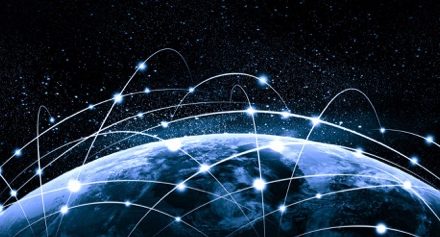Outlook: Industry Reaps Benefits of a High-Tech World

Originally appeared on TTI Marketeye Blog
By Victoria Kickham for TTI
Electronics sector stays strong as technology demand remains in high gear.

Earlier this month, reports from the purchasing sector indicated continued U.S. economic strength despite supply chain challenges around pricing, component availability and employment. Data from both the Institute for Supply Management as well as market researcher IHS Markit pointed to the resilience of the U.S. manufacturing sector heading toward the end of the year, with both indicating increases in output and new orders for makers of a wide range of products. ISM noted in its monthly Report on Business this month that production edged up in September, continuing a two-year upward trend. The group’s New Orders Index continued to grow as well, although at a slower rate, marking a 33-month upward trend. Likewise, IHS Markit’s U.S. Manufacturing PMI report for September showed that manufacturing output rose at one of the fastest rates of the year, while it said that new orders growth hit its highest level since May, boosted by strong domestic demand, especially in consumer markets.
Much of the demand is tied up in technology, as a new report from consulting giant Gartner, Inc. indicates. Gartner released its Top 10 Strategic Technology Trends for 2019 this month, offering a look at some of the hottest tech areas to watch in the coming year. The list includes everything from Augmented Analytics to Digital Twins to Blockchain technology, and is designed to point organizations toward some of the key technologies they should be exploring in the year ahead. Three, in particular, have special relevance to the electronics channel, as it relates to demand for components and solutions: Autonomous Things, Edge Computing, and Smart Spaces.
Here’s a look at what Gartner says about each of these growing areas and how they are influencing the professional and consumer landscapes:
- Autonomous Things
Autonomous things, such as robots, drones and autonomous vehicles, use artificial intelligence (AI) to automate functions previously performed by humans. Their automation goes beyond the automation provided by rigid programming models and they exploit AI to deliver advanced behaviors that interact more naturally with their surroundings and with people.“As autonomous things proliferate, we expect a shift from stand-alone intelligent things to a swarm of collaborative intelligent things, with multiple devices working together, either independently of people or with human input,” according to Dave Cearley, company vice president and Gartner Fellow. “For example, if a drone examined a large field and found that it was ready for harvesting, it could dispatch an ‘autonomous harvester.’ Or in the delivery market, the most effective solution may be to use an autonomous vehicle to move packages to the target area. Robots and drones on board the vehicle could then ensure final delivery of the package.” - Empowered Edge
The edge refers to endpoint devices used by people or embedded in the world around us. Edge computing describes a computing topology in which information processing, and content collection and delivery, are placed closer to these endpoints. It tries to keep the traffic and processing local, with the goal being to reduce traffic and latency.In the near term, edge is being driven by IoT and the need keep the processing close to the end rather than on a centralized cloud server. However, rather than create a new architecture, cloud computing and edge computing will evolve as complementary models with cloud services being managed as a centralized service executing not only on centralized servers but in distributed servers on-premises and on the edge devices themselves.Over the next five years, specialized AI chips, along with greater processing power, storage and other advanced capabilities, will be added to a wider array of edge devices. The extreme heterogeneity of this embedded IoT world and the long life cycles of assets such as industrial systems will create significant management challenges. Longer term, as 5G matures, the expanding edge computing environment will have more robust communication back to centralized services. 5G provides lower latency, higher bandwidth, and (very importantly for edge) a dramatic increase in the number of nodes (edge endpoints) per square kilometer.
- Smart Spaces
A smart space is a physical or digital environment in which humans and technology-enabled systems interact in increasingly open, connected, coordinated and intelligent ecosystems. Multiple elements — including people, processes, services and things — come together in a smart space to create a more immersive, interactive and automated experience for a target set of people and industry scenarios.“This trend has been coalescing for some time around elements such as smart cities, digital workplaces, smart homes and connected factories. We believe the market is entering a period of accelerated delivery of robust smart spaces with technology becoming an integral part of our daily lives, whether as employees, customers, consumers, community members or citizens,” Cearley said.
Gartner describes a strategic technology trend as one with “substantial disruptive potential that is beginning to break out of an emerging state into broader impact or use” or that is a rapidly growing trend “with a high degree of volatility” that will reach a tipping point in the next five years.
Taking all of this into consideration, growth in the three trends noted here bodes well for the entire electronics industry, as demand for components, services and solutions to support them will remain on the upswing as well.













